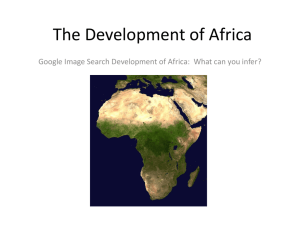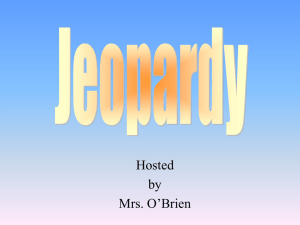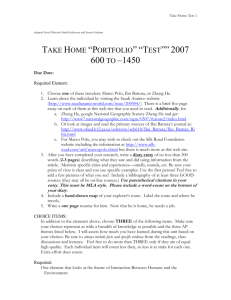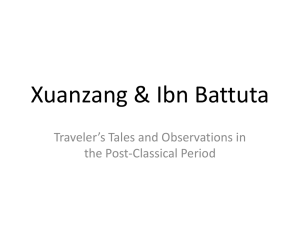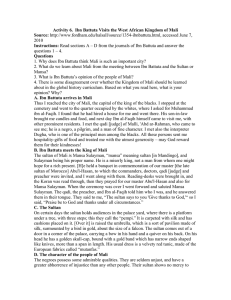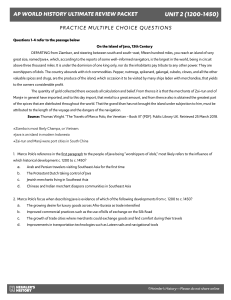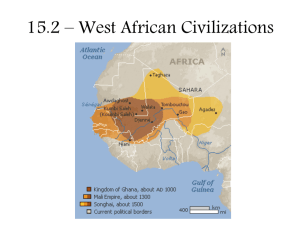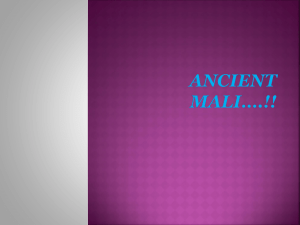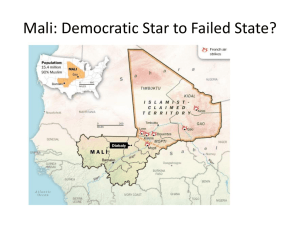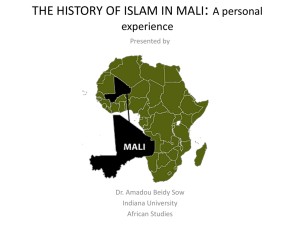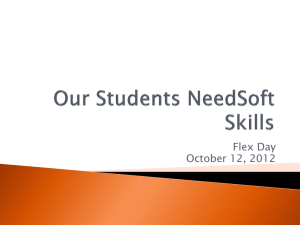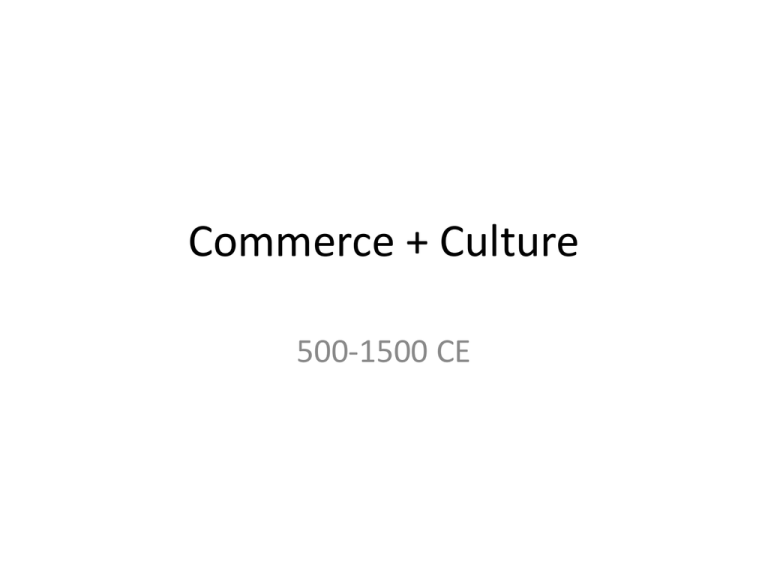
Commerce + Culture
500-1500 CE
Post Classical/Medieval
• In between Classical + Modern Eras
• Interaction between civilizations
– Trade: new technologies, food/spices, animals,
disease
– Roads (land, sea, sand)
• Difference: Classical Civilizations= settle
farming societies vs Post Classical =
Nomadic/Herding societies
Areas of Trade
1 East Asia (China-Japan-Korea-Vietnam)
2 Middle East (Islamic World, Muhammad=
Merchant)
3 Eurasia (World of Christendom Byzantine,
Franks, Russia)
4 Africa (Ghana, Mali)
5 Americas (Anasazi, Mayas, Toltec, Iroquois,
Aztec, Inca)
“All Roads Lead to Rome”
• Silk Road
–
–
–
–
–
–
–
Eurasia (Europe + Asia)
Nomadic Herders= protected road
Stable Gov’t
Silk = Currency + Sacred
Buddhism=spread
6th Cent. Technology of making silk was discovered
Impact
• Disease=plague, measles, smallpox
• Europeans developed resistance
• Americas+Africas= slaughtered by disease
Sea Roads
• Indian Ocean (brought together Europe, Asia, Africa,
Middle East)
•
•
•
•
•
Ships-more cargo
Monsoons-guided ships
Always involved in trade
Increased when Tang + Song thrived (China)
Southeast Asia (Srivijaya (cultural diffusion); Sailendra
(Boroburden)
• Influence on Africa=Swahili (Arabic+ Bantu)
Sand Roads
• Across Sahara
– Linked North Africa w/Mediterranean World
• Gold in West Africa
• Introduction of Camel: increased trade = Caravans
Americas
• Slow Growth
– Lack of animals + geography tough
– Cohokia traded along Mississippi River
– Pochteca-Aztec Merchants
Discussion Questions
1. What happens when cultures interact when strangers
meet?
2. How did external stimuli operate to produce change w/in
particular societies?
3. How did individuals or societies decide what to accept +
what to reject when confronted w/new ideas or
practices?
4. Were they free to decide such questions, or were they
acting under pressure or constraints that limited the
possibilities of real choice?
5. In what ways did they alter foreign customs or traditions
to better meet their own needs and correspond to their
own values?
Document 8.2: A European Christian in
China
• Q. How would you describe Marco Polo’s impressions of the city?
What did he notice? What surprised him?
•
• • Marco Polo was impressed with the size, wealth, and
sophistication of the city.
• • He noticed its physical features, trades, markets, and the social
relations within its neighborhoods.
•
• He was surprised by the public amenities, like the pavilions on
the islands in the lake and the 3000 public baths; the fact that the
city could be supplied by its system of markets; the lack of violence
and weapons among the population; and the communal spirit in its
neighborhoods.
Q. Why did Marco Polo describe the city as “the finest
and the noblest in the world”?
•
•
•
•
•
•
•
The city was a “hundred miles of compass,” suggesting that it covered a
huge area.
•
The city possessed many impressive features, including twelve thousand
bridges of stone; twelve guilds, each with large numbers of workers and wealthy
masters; a large number of wealthy merchants; many beautiful palaces and
mansions; and many Buddhist churches and monasteries.
•
It had a set of public facilities on islands in a lake, where weddings and other
celebrations were staged, and 3,000 baths.
• There was a large amount of silk in the city.
•
Ten principal markets, and a great number of others, could be found
throughout the town; and the tax revenues were so vast that they were not easy
to account for in writing. There were various trades, and a system of royal justice.
•
Marco Polo was also impressed with the peaceful character and sense of
community in the city, and the lack of adulterous behavior between men and
women.
Q. What marks his account of the city as that of
a foreigner and a Christian?
• Marco Polo clearly appears to be an outsider
and Christian when he describes Buddhist
abbeys and churches as “abbeys and churches
of the Idolaters” (p. 361), and when he
describes the eating of every kind of flesh,
including dogs and other unclean beasts,
which he claims no Christian could be induced
to eat.
Q. What evidence of China’s engagement with a
wider world does this account offer?
• China’s engagement with the wider world is indicated
by Marco Polo’s depiction of the large artisan and
merchant classes in the city, and his account of how
merchants from India and other foreign lands stored
their wares in the city.
• • Clear evidence is his description of the port Ganfu,
twenty-five miles from the city, “which is engaged in
the traffic to and from India and other foreign parts,
exporting and importing many kinds of wares, by which
the city benefits” (p. 361).
• • In addition, he notes that wine and raisins were
imported into the city from overseas.
Document 8.3: A Moroccan Muslim in
West Africa
•
•
•
•
•
Q. How would you describe Ibn Battuta’s impression of Mali? What
surprised or shocked him? What did he appreciate?
•
Ibn Battuta’s account reveals both great admiration and shock.
• He was shocked by women’s freedom to interact with men, even in
private, as well as their clothing, or more precisely their relative lack of
clothing. He was also shocked by the persistence of local ceremonies, and
the eating of dogs, asses, and carrion.
• Battuta was surprised by the gifts give to him by the sultan of Mali,
and the court ceremony in Mali, especially the dress of court poets on
feast days.
• He appreciated the piety and good practice of local Muslims; the
safety of the roads; the justness of the population; the justice and security
that he found in the kingdom; the cleanliness of clothing, especially that
worn for Friday prayers; and the size and provisioning of some cities.
Q. What does Ibn Battuta’s description of his visit to
Mali reveal about his own attitudes and his image of
himself?
• He is very much attached to the Islamic
culture that he lived in, and is not inclined to
accept the differences he finds in Mali.
• • He sees himself as a significant figure, as
indicated by his expectation that the Mali
ruler would entertain and provide gifts to him.
Q.
What might historians learn from this document about
the nature and extent of Islam’s penetration in this West
African empire? What elements of older and continuing West
African cultural traditions are evident in the document?
• Historians could learn that Islam was practiced with fervor in this
region, as can be seen in Battuta’s description of Friday Prayers in
Mali, and that there were Muslims who had made the pilgrimage to
Mecca. Also of interest would be the number of qadi and religious
scholars that Battuta notes meeting.
• • Elements of continuing West African cultural traditions include
the dress and demeanor of women; the relationships between
women and men who are not members of the same family or
household; the court ritual surrounding the pempi; the presence of
two saddled and bridled horses and two goats at the pempi to
protect against the evil eye; and the court poetry recited by
costumed men on feast days.
Q.
•
•
•
•
What specifically does Ibn Battuta find
shocking about the women he encountered on his
travels in West Africa?
Particularly shocking to Battuta is that in Iswalatan,
women are shown more respect than men, and men
figure their lineage through their mother’s brother.
• Women show no bashfulness before men and do
not veil themselves.
• Men and women have “friends” and ”companions”
of the opposite sex who are not members of their own
families or households.
• In Mali, he notes that women servants, slave girls,
and young girls go about in front of everyone naked.
Q. What indications of Mali’s economic involvement
with a wider world are evident in the document?
• Ibn Battuta notes that the trade routes are safe and well
policed. In the villages along trade routes, local women are
ready to sell food stuffs to travelers in exchange for salt and
glass ornaments.
• • There is a quarter for foreigners in the city of Mali, and
the Mali kings do not confiscate the property of foreigners
who die in their kingdom.
• • The Mali king wore a red tunic on ceremonial
occasions made of the European fabrics called “mutanfas.”
• • The buying and selling in Gawgaw is done using cowry
shells.

